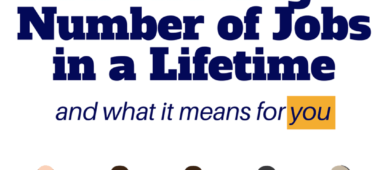If you’re like most families with kids, you probably have an abundance of toys you no longer need or want. Kids grow out of and get bored with toys, so it’s nice to have an idea of where to donate used toys.
Some places are pretty picky while others are not. There can be issues with cleanliness and other factors that make donation centers leary about accepting used toys.
However, there are still places that will let you donate used toys so they can go to kids that will use and appreciate them. Here are some options.
Table of Contents
- 1. Salvation Army
- 2. Goodwill
- 3. Stuffed Animals for Emergencies
- 4. Vietnam Veterans of America
- 5. Second Chance Toys
- 6. Freecycle or Craigslist “Free” Section
- 7. Local Domestic Violence Shelters
- 8. Resale Stores
- 9. Local Emergency Childcare Services
- 10. Local Hospitals
- Places Where You Cannot Donate Used Toys
- Summary
Before we get to “official” places you can donate toys, one good option is looking for a Buy Nothing group in your area. Many have groups on Facebook where you can post new and gently used items, including toys, that other families may need. You won’t get a receipt for your donation for tax purposes but it helps someone directly in need.
1. Salvation Army
The Salvation Army has thrift stores located throughout the United States. Besides toys, the Salvation Army accepts clothing, furniture, automobiles, and more.
Note that not all Salvation Army thrift stores or home pickup trucks accept all types of toys or stuffed animals. Your best bet is to call your local Salvation Army or stop by your local Salvation Army thrift store and ask what types of toys they accept.
Profits from the Salvation Army donations and thrift stores go to help veterans, the elderly, and other people groups in need of assistance.
2. Goodwill
Goodwill Industries has been providing help for those in need for over 100 years. When you donate used toys to a Goodwill thrift store, you’ll help Goodwill raise money.
The money it raises goes to help the community in a variety of different ways. They help people find jobs, meet their financial needs, and more.
If you’ve shopped at a Goodwill thrift store you probably already know they accept donations of clothing, household items, and more for resale. However, you can also donate used toys to Goodwill. They accept used games as well. The Goodwill website didn’t specify what kind of toys the thrift stores will accept, however.
I’d check with your local Goodwill thrift store for more details on which types of toys they do and do not accept.
3. Stuffed Animals for Emergencies
Stuffed Animals For Emergencies (SAFE for short) is a charity that gives stuffed animals to children in emergency situations. Such as children who are involved in a domestic violence incident, a house fire, car accident, or other traumatic event.
You can donate gently used stuffed animals to SAFE. However, please be sure that the stuffed animals meet the following guidelines:
- Only gently used stuffed animals
- Stuffed animals that have been properly cleaned (the website has a guide)
- Stuffed animals that were part of a collection, haven’t been played with, and still have tags on are considered “new” even if they’ve been stored cleanly in your home
As referenced in the bullet point section, please see the site’s cleaning guide before you clean a gently used stuffed animal to donate.
4. Vietnam Veterans of America
Vietnam Veterans Of America collects donated items, including used toys, that you can drop off at any of their dozens of U.S. locations. Depending on the local chapter, you might even be able to get them to make a pick up at your home.
When they collect your used toys and other items, they resell them and use the profits to help care for and support Vietnam Veterans. The website says that they’ll pick up “almost anything” you have to donate.
5. Second Chance Toys
Second Chance Toys is a charity that has dropoff locations in New York, New Jersey, Philadelphia, and DC/Northern Virginia.
If you have more than 50 toys to give away, you can call them and they’ll arrange for a dropoff at a location near you. This charity specializes in finding homes for used toys.
Typically, the toys will go to a community organization or child care organization that serves underprivileged kids. The organization has a goal of keeping toys out of landfills and using them to help kids learn and grow via motor skills development.
6. Freecycle or Craigslist “Free” Section
Sites like Freecycle and the free section on Craigslist can be great places to donate used toys. Many families would love to have more toys for their children, but it’s just not in the budget.
As with other sites, be sure the toys are clean, in decent shape, and safe (not broken or dangerous). Specify what minimum age the toys are meant for as well, so that little toys that are choking hazards don’t get into the hands of kids that are too young to have them.
Facebook Marketplace or other sites that are similar to Craigslist can be a good place to give toys away too.
7. Local Domestic Violence Shelters
Each year, an average of 24 people per minute are victims of some type of domestic violence. Sometimes, parents and children who are victims of domestic violence have to leave their homes and stay at a protective shelter where they are protected from abusers.
Many local domestic violence shelters will take donations of gently used toys so that children have toys to play with while they live at the shelter. Domestic violence shelters act as temporary housing while parents work to set up a safe living situation away from their abuser.
8. Resale Stores
Some resale or consignment stores such as Once Upon A Child will take your used toys you wish to donate. You can donate your toys, or in some instances, these sorts of shops will buy them from you at a low price.
Again, be sure they’re gently used and in good shape, with no broken or missing pieces.
9. Local Emergency Childcare Services
Many metropolitan cities have emergency childcare services – often called crisis nurseries – for parents who are in a bind and need occasional child care. For instance, if a parent is trying to get help for addiction, or move, or something similar, they can find childcare for a specified amount of time.
The crisis nursery in our area will allow you to leave your child for emergency care for up to three days and nights. Check with a local crisis nursery in your area to see if they might be in need of donated toys.
Kids placed for care in these types of nurseries could use some toys to play with.
10. Local Hospitals
Another place you might want to check about donating used toys is your local hospital. Both children’s hospitals and all-purpose hospitals that care for children might be able to use your donated toys.
Some kids end up being in the hospital for a few days or sometimes much longer. It’s nice for them to have toys to place with. Our local children’s hospital has a large toy room where kids can get a change of scenery from their small hospital rooms and have a fun place to go and play.
Some ideas for toys your local hospital might like to have donated (in good shape, of course) include puzzles, toddler toys, books, games, educational toys, or just your plain old dolls, cars, and trucks.
Try and avoid donating stuffed animals and cloth dolls to hospitals as they aren’t as easily disinfected. And kids in hospitals often need to be exposed to as few germs as possible.
Bonus idea: Check with your local doctor’s office to see if they want your gently used toys to keep little ones occupied while in waiting rooms or doctor’s rooms. Again, try and steer clear of cloth and stuffed toys that are more difficult to clean and disinfect.
If you also have books to donate, here is a list of places where you can donate used books. We also have this list of places to donate used eyeglasses.
Places Where You Cannot Donate Used Toys
Despite some publications that say differently, there are a few places that no longer accept used toy donations. They may have in the past, but we found specific website pages that said that isn’t the case any longer.
Ronald McDonald House
According to this webpage, Ronald McDonald House no longer accepts used toys. Also, they do not accept new stuffed animals any longer either. No plushies, Beanie Babies, etc.
Toys For Tots
There were a few articles that said U.S. Marines Toys For Tots program accepts used toys as well. According to this webpage, that hasn’t been the case since 1980. The Toys For Tots website said that distributing used toys to some children was giving them the wrong message that they weren’t worthy of new toys, while kids who received new toys were more deserving.
This is understandable. Suffice to say you’ll have to find a different venue than Toys For Tots to donate your used toys.
Summary
If you’re wanting to know where to donate used toys, you can see you’ve got several options. If none of the options on this list work for you, check with local daycares, religious organizations, or even with families and friends that have younger children.
If your toys are in good shape, surely you can find someone who wants to take them off your hands.




Isn’t there some place that would like stuffed toys that are not clean but perfectly good ones. It would be a shame to toss!
Amazing that only business that MUST make a large profit like the salvation army and goodwill pay to be at the top of lists that will take like new, used toys. Now I have to throw 200 dolls and a hundred other toys and games in the trash and fill the landfill.
Hello Ms. Blank,
The version of Toys for Tots web pages I looked at today (June 2, 2022) appear to indicate that the program IS accepting toys for distribution to children. See:
https://www.toysfortots.org
and especially:
https://www.toysfortots.org/about_toys_for_tots/toys_for_tots_foundation/educating_the_public/default.aspx
You may wish to check that out and perhaps update your web page at:
https://wallethacks.com/donate-used-toys-near-me/
Thank you.